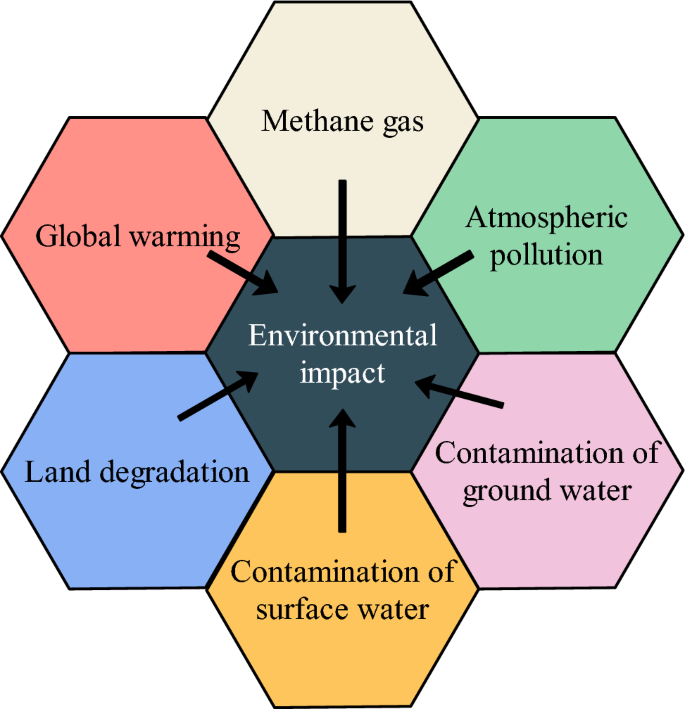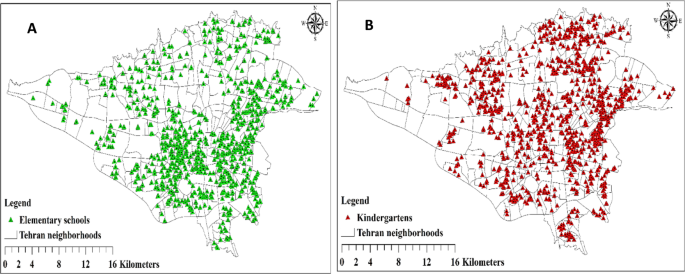Executive Summary: A Data-Driven Framework for Sustainable Waste Management
This report details a data-driven framework developed to forecast Municipal Solid Waste (MSW) generation and associated emission dynamics in Erode City, India. The research directly addresses several Sustainable Development Goals (SDGs), particularly SDG 11 (Sustainable Cities and Communities), SDG 12 (Responsible Consumption and Production), and SDG 13 (Climate Action). By employing supervised machine learning algorithms—Support Vector Machine (SVM), Random Forest (RF), and Naive Bayes (NB)—on a five-year dataset (2019–2024), the study provides a predictive tool for strategic urban planning. The SVM model demonstrated superior performance, achieving 96% prediction accuracy with minimal error and computational latency, making it suitable for real-time deployment. Key findings identified plastic and organic waste as dominant predictors, highlighting critical areas for intervention to promote a circular economy and mitigate greenhouse gas emissions. This framework offers a scalable solution for municipalities to enhance waste management efficiency, quantify environmental impacts, and make informed decisions that align with global sustainability targets.
1.0 Introduction: The Imperative for Sustainable Waste Management
1.1 The Global Waste Crisis and its Conflict with the SDGs
The escalating generation of solid waste (SW), produced by commercial, residential, and industrial activities, presents a significant barrier to achieving the 2030 Agenda for Sustainable Development. Inadequate management of MSW directly undermines several SDGs:
- SDG 11 (Sustainable Cities and Communities): Unmanaged waste degrades urban environments, affecting the quality of life and sustainability of cities.
- SDG 12 (Responsible Consumption and Production): Current linear “take-make-dispose” economic models result in massive waste generation, highlighting the urgent need for circular systems that prioritize reduction, reuse, and recycling.
- SDG 13 (Climate Action): Landfills are a major source of methane, a potent greenhouse gas, directly contributing to climate change. The energy-intensive processes of manufacturing and transporting goods for consumption further amplify carbon emissions.
Global waste generation is projected to increase by 70% by 2050 if current trends persist, with high-income nations disproportionately contributing to the problem. This trajectory is unsustainable and necessitates innovative, data-driven solutions.
1.2 Environmental and Socio-Economic Impacts
Unregulated open dumping of SW has severe consequences that impede progress on multiple SDGs:
- Impact on SDG 3 (Good Health and Well-being): Open dumps attract disease vectors and release toxic substances, posing significant health risks to nearby communities.
- Impact on SDG 6 (Clean Water and Sanitation): Leachate from dumpsites contaminates groundwater and surface water, threatening access to clean water.
- Impact on SDG 15 (Life on Land): Landfills lead to deforestation, habitat destruction, and soil degradation, resulting in biodiversity loss.
1.3 AI and Machine Learning: A Catalyst for SDG-Aligned Waste Management
To address these challenges, this study leverages Artificial Intelligence (AI) and Machine Learning (ML) as enabling technologies, aligning with SDG 9 (Industry, Innovation, and Infrastructure). AI-powered frameworks can transform reactive waste handling into a predictive and optimized system. By analyzing complex datasets comprising socio-economic indicators, spatial data, and historical waste volumes, ML models like SVM, RF, and NB can:
- Accurately forecast waste generation rates to optimize collection and infrastructure planning.
- Identify waste hotspots and classify waste types to support targeted recycling and treatment strategies (SDG 12).
- Quantify greenhouse gas emissions to guide climate mitigation policies (SDG 13).
This research aims to develop such a framework for Erode City, providing a model for other urban centers seeking to integrate technology for sustainable development.
2.0 Research Methodology
2.1 Study Area and Data Acquisition
The research was conducted in Erode City, India, which generates approximately 250 metric tons of waste daily. Data was collected through a multi-pronged approach:
- Primary Data: Sourced from the Erode city municipal corporation, including information on collection logistics and disposal site operations.
- Questionnaire Survey: A survey was conducted from September 2023 to April 2024 using a multi-stage cluster sampling technique to capture data from diverse zones (residences, institutions, industries). The sample size was scientifically determined to ensure statistical validity.
- Socio-Economic Indicators: Data on population density, household income, education levels, and urbanization rates were integrated to model consumption patterns, a key driver of waste generation and a focus of SDG 12.
2.2 Data Processing and Predictive Modeling
The collected data, spanning five years (2019-2024), underwent rigorous pre-processing, including normalization, missing value imputation, and spatial zoning analysis. Three supervised machine learning algorithms were employed to forecast waste generation and classify disposal patterns:
- Support Vector Machine (SVM)
- Random Forest (RF)
- Naive Bayes (NB)
Feature selection and proximity ranking techniques were used to identify the most influential variables. The models were trained and validated using an 80:20 training-to-testing ratio and k-fold cross-validation to ensure robustness and generalizability.
3.0 Results and Analysis
3.1 Waste Generation Trends and Composition
Analysis of historical data revealed a significant increase in waste generation in Erode City, rising from 2566.65 MT/day in 2019 to 3724.18 MT/day in 2024. This trend underscores the urgent need for interventions aligned with SDG 11.6, which aims to reduce the adverse environmental impact of cities through improved waste management. The survey identified distinct waste composition patterns across zones, with food waste dominating residential areas and paper waste prevalent in commercial zones. This data is critical for designing targeted waste reduction and recycling programs under SDG 12.
3.2 Feature Importance and Proximity Analysis
Proximity matrix analysis and feature selection identified plastic and organic waste as the most dominant predictors of overall waste generation. The close correlation between these two streams suggests that zones with high plastic accumulation also generate significant organic waste. This insight is vital for sustainable planning:
- Organic Waste: A primary source of methane emissions in landfills, its management is crucial for SDG 13 (Climate Action).
- Plastic Waste: A persistent pollutant, its prevalence highlights the need for policies promoting responsible production and consumption (SDG 12).
3.3 Performance of Machine Learning Models
The performance of the three ML models was evaluated based on accuracy, Mean Squared Error (MSE), and computational time. The SVM model emerged as the most effective and efficient.
- Support Vector Machine (SVM): Achieved a prediction accuracy of 96%, the lowest MSE (4860), and the fastest processing time (0.67 seconds). Its high performance and low latency make it ideal for real-time decision support systems.
- Random Forest (RF): Achieved 91.5% accuracy.
- Naive Bayes (NB): Achieved 93.2% accuracy.
The superior accuracy of the SVM model provides municipal authorities with a reliable tool to forecast waste volumes, plan resource allocation, and proactively manage environmental impacts, thereby advancing SDG 11.
4.0 Conclusion and Strategic Recommendations
This study successfully developed and validated a machine learning framework for forecasting MSW generation and emission potential in Erode City. The SVM model’s 96% accuracy provides a robust, data-driven tool to support strategic decision-making aligned with the Sustainable Development Goals. The identification of plastic and organic waste as key drivers offers a clear focus for policy interventions.
4.1 Recommendations for Sustainable Urban Waste Management
To translate these findings into actionable policy and advance the SDGs, the following recommendations are proposed:
- Implement Zonal Waste Management Plans (SDG 11): Use the model’s predictions to develop targeted infrastructure, such as composting facilities in zones with high organic waste and material recovery facilities in areas with high plastic waste.
- Promote a Circular Economy (SDG 12): Launch awareness campaigns and implement policies mandating source segregation, especially for organic and plastic waste, to enhance recycling and reduce landfill dependency.
- Integrate Carbon Emission Metrics into Planning (SDG 13): Utilize the framework to regularly estimate GHG emissions from waste and evaluate the climate impact of different management strategies, such as landfill gas capture or waste-to-energy systems.
- Leverage Smart Technology (SDG 9): Deploy IoT-enabled smart bins to collect real-time data, further enhancing the accuracy of predictive models and optimizing waste collection routes.
- Foster Community Engagement: Develop digital platforms to involve citizens in waste management, providing information on collection schedules and segregation guidelines, thereby fostering a culture of environmental responsibility.
4.2 Future Scope
Future work will focus on integrating real-time sensor data and employing hybrid deep learning architectures. These advancements will further refine predictive accuracy and support the development of fully automated, intelligent waste management systems, accelerating progress towards creating sustainable, resilient, and inclusive cities as envisioned by the SDGs.
Analysis of Sustainable Development Goals in the Article
1. Which SDGs are addressed or connected to the issues highlighted in the article?
-
SDG 3: Good Health and Well-being
The article connects improper waste management to significant public health risks. It states that open dumping leads to “health hazards like carcinogenic diseases” and that pollutants from these sites “impact respiratory health.” This directly links the environmental issue of waste disposal to human health outcomes.
-
SDG 6: Clean Water and Sanitation
The article explicitly discusses the impact of unregulated waste dumps on water resources. It mentions “Freshwater Pollution” and “groundwater contamination” caused by leachate, a hazardous liquid from waste, seeping into the ground. It also notes that rainfall can carry pollutants into “neighboring waterways, wetlands, or streams, resulting in surface water contamination.”
-
SDG 9: Industry, Innovation, and Infrastructure
The core of the article is about applying technological innovation to solve a municipal infrastructure problem. It proposes a “data-driven framework for forecasting municipal solid waste (MSW) generation” using “supervised machine learning algorithms.” The discussion of AI, IoT, smart bins, and deep learning architectures to “optimize waste handling” and create “sustainable waste handling strategies and infrastructure planning” directly aligns with this goal.
-
SDG 11: Sustainable Cities and Communities
The research is centered on Erode City, India, and its challenges with Municipal Solid Waste (MSW) management. The article addresses the “critical escalation in MSW generation” in urban areas and the negative environmental impacts of cities, such as air and water pollution from dump yards. The goal of creating an efficient waste forecasting and management system is fundamental to making cities more sustainable.
-
SDG 12: Responsible Consumption and Production
The article discusses the entire lifecycle of waste, from generation to disposal. It highlights the need for “SW reduction,” “recycling,” and “composting.” It also analyzes waste composition (plastic, organic, paper) and links waste generation rates to socio-economic factors like income levels, which are tied to consumption patterns. The promotion of the “3R principles” (Reduce, Reuse, Recycle) is a key aspect of this SDG.
-
SDG 13: Climate Action
A significant focus of the article is on the climate impact of waste. It states that landfills produce “methane (CH4), a powerful GHG,” and that the “processing and disposal of SW releases 1.6 billion tons of equivalent to CO2 greenhouse gases” globally. The proposed machine learning framework is designed to enable “emission quantification” and guide “carbon mitigation strategies,” directly addressing climate change.
2. What specific targets under those SDGs can be identified based on the article’s content?
-
Under SDG 3 (Good Health and Well-being)
- Target 3.9: By 2030, substantially reduce the number of deaths and illnesses from hazardous chemicals and air, water and soil pollution and contamination. The article supports this by identifying health risks from “groundwater contamination,” “air pollution” due to “toxic gasses,” and general exposure to hazardous materials in “non-engineered landfills.”
-
Under SDG 6 (Clean Water and Sanitation)
- Target 6.3: By 2030, improve water quality by reducing pollution, eliminating dumping and minimizing release of hazardous chemicals and materials. The article’s focus on preventing “Freshwater Pollution” and “surface water contamination” from unregulated open dumps directly relates to this target.
-
Under SDG 9 (Industry, Innovation, and Infrastructure)
- Target 9.4: By 2030, upgrade infrastructure and retrofit industries to make them sustainable, with increased resource-use efficiency and greater adoption of clean and environmentally sound technologies. The proposed framework using AI, ML, and IoT to create a “smart municipal waste management system” is a clear example of adopting clean and efficient technology to upgrade municipal infrastructure.
- Target 9.5: Enhance scientific research, upgrade the technological capabilities of industrial sectors in all countries. The entire study is a research initiative aimed at developing and applying advanced technological solutions (ML models like SVM, RF, NB) to improve waste management, thereby upgrading the sector’s capabilities.
-
Under SDG 11 (Sustainable Cities and Communities)
- Target 11.6: By 2030, reduce the adverse per capita environmental impact of cities, including by paying special attention to air quality and municipal and other waste management. The article is entirely focused on improving MSW management in Erode City to mitigate its negative impacts, such as air pollution (“foul odors,” “harmful emissions”) and land contamination from dump yards.
-
Under SDG 12 (Responsible Consumption and Production)
- Target 12.5: By 2030, substantially reduce waste generation through prevention, reduction, recycling and reuse. The article emphasizes the importance of “Recycling, which involves sorting and processing resources like glass, plastic, paper, and metals for reuse,” and mentions “SW minimization” and “composting” as key strategies.
-
Under SDG 13 (Climate Action)
- Target 13.2: Integrate climate change measures into national policies, strategies and planning. The research aims to provide “actionable insights for policymakers by quantifying carbon emission potentials” and guiding “carbon mitigation strategies.” This is a direct application of integrating climate considerations into municipal planning.
3. Are there any indicators mentioned or implied in the article that can be used to measure progress towards the identified targets?
-
For Target 11.6
- Indicator 11.6.1: Proportion of municipal solid waste collected and managed in controlled facilities out of total municipal waste generated, by cities. The article provides data on waste generation (“average of 250 metric tons of waste daily” in Erode City) and discusses the prevalence of “unregulated open dumping.” The study’s goal is to improve management, and its success could be measured by the increase in waste managed in controlled facilities versus open dumps.
-
For Target 12.5
- Indicator 12.5.1: National recycling rate, tons of material recycled. The article implies this indicator by analyzing waste composition (“plastic and organic waste emerging as dominant predictors”) and surveying the public on “source segregation status.” Improving segregation and recycling rates is a direct outcome sought by the recommendations.
-
For Target 13.2
- Indicator 13.2.2: Total greenhouse gas (GHG) emissions per year. The article explicitly mentions the goal of “emission quantification” and “carbon footprint assessments.” It notes that landfills produce methane (CH4) and CO2, and the proposed ML model is designed to forecast and help mitigate these emissions. The amount of GHG emissions (in CO2 equivalents) from waste management activities would be the direct indicator.
-
For Target 9.4 & 9.5
- Implied Indicator: Adoption rate of advanced technologies in waste management. The article details the development and performance of specific ML models, with the SVM model achieving “a prediction accuracy of 96%.” The deployment and use of such technologies by municipal authorities would serve as a clear indicator of progress.
-
For Target 3.9 & 6.3
- Implied Indicator: Levels of pollutants in air and water near dump sites. The article describes “frequent fire incidents, foul odors, groundwater contamination” as problems. Measuring the concentration of harmful gases (CH4, NOX, COX) in the air and contaminants in nearby water sources would be a direct way to measure the impact of improved waste management on health and water quality.
4. Summary Table of SDGs, Targets, and Indicators
| SDGs | Targets | Indicators |
|---|---|---|
| SDG 3: Good Health and Well-being | 3.9: Substantially reduce deaths and illnesses from hazardous chemicals and pollution. | Implied: Levels of air and water pollutants near dump sites; Incidence of pollution-related illnesses (e.g., respiratory issues) in nearby communities. |
| SDG 6: Clean Water and Sanitation | 6.3: Improve water quality by reducing pollution and eliminating dumping. | Implied: Measurement of contaminants in groundwater and surface water bodies affected by landfill leachate. |
| SDG 9: Industry, Innovation, and Infrastructure | 9.4: Upgrade infrastructure with clean and environmentally sound technologies. 9.5: Enhance scientific research and upgrade technological capabilities. |
Implied: Adoption rate of AI/ML and IoT systems in municipal waste management; Performance metrics of predictive models (e.g., 96% accuracy of the SVM model). |
| SDG 11: Sustainable Cities and Communities | 11.6: Reduce the adverse per capita environmental impact of cities, especially in waste management. | 11.6.1: Proportion of municipal solid waste collected and managed in controlled facilities. (The article provides baseline data on daily waste generation and highlights uncontrolled dumping). |
| SDG 12: Responsible Consumption and Production | 12.5: Substantially reduce waste generation through prevention, reduction, recycling, and reuse. | 12.5.1: National recycling rate, tons of material recycled. (Implied through analysis of waste composition, source segregation surveys, and promotion of recycling). |
| SDG 13: Climate Action | 13.2: Integrate climate change measures into policies, strategies, and planning. | 13.2.2: Total greenhouse gas (GHG) emissions per year. (The article’s framework is designed for “emission quantification” and “carbon mitigation strategies”). |
Source: nature.com







